-
Georgian Cultural Policy Instruments
9 Aprile 2013
 Cultural Policy
Cultural Policy -
Report for the International Round Table
“Reform in Culture: New Instruments of Cultural Policy in the Conditions of Integration into the European Cultural Space”
Kyiv, Ukraine – October 13, 2011
Nino Gunia-Kuznetsov
Ilya Chavchavadze State University, Georgia
ИНСТ
 РУМЕНТЫ КУЛЬТУРНОЙ ПОЛИТИКИ ГРУЗИИ
РУМЕНТЫ КУЛЬТУРНОЙ ПОЛИТИКИ ГРУЗИИ
The main points of the report:
• To identify the prerequisites for various models of the Georgian cultural policy
• to analyze the formation of a working model of cultural policy.
• To analyze the tools and instruments required for achievement of the identified priorities and objectives of the current model of cultural policy.Final assessment
The cultural policy has been gradually formed and developed depending on the domestic and international situation: until August 2008, the culture in Georgia was not really a feature of foreign policy. In the common context of intensification of centralisation, the culture was perceived as a tool of domestic policy aimed at demonstration of the adherence to traditional values, on the one side, (strengthening of priorities in cultural heritage), and as a globalisation instrument, on the other side, the corner stone of which has become the education, in particular, the creative education.
To create an effective and democratic cultural policy we propose
- Democratization of decision-making through correlation of the state institutions and the professional community, cooperation of participants of cultural policy (government, NGO and private sector, actors and officials, manufacturers and consumers of cultural products) aimed at identifying its priorities.
- Increase of professionalism frames through the deepening and development of education in the cultural sphere, including in management culture.
- The development of rights and obligations of artistic professional community in accordance with the European cultural standards by promoting legislative initiatives to ensure diversification of financial sources, the establishment of benefits and status of free artists, art boards and other means of indirect control.
Overview of Cultural Policy Reform in Georgia
The shift in policy following the Russian-Georgian military conflict helped to focus on the promotion of culture as a facility for building a positive international image of Georgia. Consequently, this has been reflected in the priorities of the national cultural policy and in the increase in the financing of culture (in spite of the war and world crisis, financing of culture has been growing year after year).
Culture has benefited in the post-war situation which has stimulated the joint efforts of different ministries and authorities aimed at the achievement of the set objective that has seemed to be impossible for the cultural policy in Georgia.
Overview of Latest Cultural Strategies
Within the period 1990-2005, all changes of government in Georgia were not evolutionary but revolutionary. As a result of this the concept of succession and sustainability have been established themselves neither on the national level, nor in the in cultural policy, thus hindering the creation and implementation of the long-term cultural strategy. The problem of strategic planning is also complicated by frequent changes in the cadre policy.
The declared policies have not been always supported by appropriate instruments and levers thus resulting in the lowering of public confidence.
For the period from 1993 to 2003 were typical financial limitations, and with the homogeneous support of the arts the cultural policy had no clear strategy. However, the culture was declared as one of the priorities of the state. The declared principles of decentralization of culture were not implemented consistently to become irreversible.
In the post-revolutionary period (since 2004) the experiments with entrepreneurial injections and total privatization of the material base of cultural industries began. However, against the background of the modified legislation and the institutional model of the state system based on the principle of centralization[1], the pursued cultural policy did not provide a systematic capital inflow, diversification of sources of financing of the culture in general, but was focused on the “blind” application of the market logic to the culture sphere. This strategy failed, both in terms of investor’s interest and in terms of development of institutions and infrastructure[2].
Until 2010, the idea that the art and culture should serve the economic growth, contribute to increase of exports and employment, and that the culture should be devoted to the positive development of the state and its image, were not very popular. Therefore, there are inconsistencies between the attempts to implement the business model and its centralization excluding such attempts in principle.
At the same time the sub-strategic lines, some of them successful, have been separated namely:
Protection of cultural heritage uniting the many-time increased public and private funding to the development of institutions responsible for protection of monuments[3].
Studies focused on the issues of restoration and conservation, and archeology and paleontology. Supported by the Ministry of Education and Science.
Cultural animation as an instrument for providing cultural democracy through participation of a large number of viewers in various social activities, has gained its force especially in the postwar period (since 2008).
Dissemination of the culture associated with super communicative ability of modern culture, with digital technology, the redistribution of cultural product, with the development of “creative industries” has the increasing governmental support.
The art created by the modern artists in the present is not so successful. This sphere is relatively consistently supported by the state, but this is an area of cultural policy where the elements of paternalizing are noticeable[4]. . Least of all the state supports education in the field of culture. In general, the policy of education, developed by the influential Ministry of Science and Education is implemented in the cultural sphere just copying the formal aspect of the Bologna process but not taking into account its ability to correlate with the tradition of creative education in Georgia.
Identification of priority areas
The strategic goals of the cultural policy for 2004 -2009 though having undergone some changes mainly stay in force:
- protection, popularization and use of tangible and intangible cultural heritage of Georgia;
- support for cultural centers / organizations of national significance;
- development of infrastructure in the cultural sphere to promote equal participation in cultural life for the regions of Georgia;
- sustainability of the system of creative education;
- maximization of contributions from the cultural sphere to the economy of Georgia;
- Creation of a free and competitive space for the sphere of culture.
In 2007 the theme of cultural heritage and culture of minorities was expanded. . In 2010, the emphasis was made on creation of a positive image of Georgia worldwide. In the postwar period, in collaboration with the Ministry of Foreign Affairs the strategic issue has become protection of immovable cultural heritage and the Georgian language on the occupied territories, as well as UNESCO’s role in solution of those issues[5].
In 2011, in the context of adoption of the new Constitution[6] and the declaration of the entrepreneurial model of the cultural policy is emphasized the theme of correlation of culture and economy: 1. Employment in culture sphere, 2. support for investment and tourism, 3. development and support of “creative industries”.[7]
The governmental funding of culture is divided into funds received from the state budget and from local budgets. The Ministry of Culture and Cultural Heritage covers the cost of the subordinated public institutions, as well as special programs of support of various areas of culture. The same principle applies to regional and municipal budgets.
Culture is sometimes funded through reserve funds of the Prime Minister (government) and the President[8]. There are also the so-called “Presidential programs”, for example, “Presidential Program of the Support of Ballet”. They are included in the budget of the Ministry of Culture and Cultural Heritage. Some institutions which sphere of activity relates to culture are funded by means of other ministries[9].The financing of culture is growing from year after year. Even in 2008 was the addition of 30% compared with 2007. The most privileged by the amount of allocated funds are the mass media, public broadcasting. After mass media goes performing art, cultural heritage and creative education.
The state governance system is as follows:
Parliament – holding legislative powers; the parliamentary committee for education, science, culture and sports is responsible for legislation and supervision of the executive power
Executive power: President of Georgia – the head of the state. Cabinet of Ministers and its head – the Prime Minister who coordinates the national government. Ministry of Culture and Cultural Heritage of Georgia is the central body in formation and implementation of the cultural policy and the main governmental body which provides the financial support of the culture. The vertical of the presidential power in regions is realized through the institute of president’s rtsmunebuli (the governor).
Local authorities – governments of autonomous republics of Abkhazia and Ajara implement the governance through their ministries of culture.
Municipal authorities: administrations -city halls and self-governances «sakrebulo» (councils) are responsible[10] for cultural activity in regions.
Nongovernmental sector is developed enough in Georgia in kind of NGO – foundations and associations. However the Georgian system of cultural administration is lacking the institute of independent art board. The cultural NGOs are mainly funded by grants which sources are not diversified.
The approach to culture at different (national, municipal) levels of power is one and the same due to the increasing trend of centralization: the local authorities “maintain” the cultural policy of the national government. Example – the Autonomous Republic of Ajara, the cultural policy of which is the quintessence of the central power policy. The problem is the political environment and the striving for replication of processes. This is particularly evident in relation to the urban heritage (rehabilitation of the “Old Town” in Tbilisi, Batumi, Sighnaghi). The debates on this topic are mainly supported by foreign foundations (of Boell, British Council) and are usually organized by professional NGOs.[11]
Mass culture and high culture
In the professional community they are discussing the different approaches to the cultural policy and the need to maintain a balance between the ‘mass’ and ‘high’ cultures.
The latter requires systematic support of the state. However, in postrevolutionary period just the mass culture in its manifestations of the mass media, pop music and so on has been developed under the watchful auspices of the government agencies, which allocate to it the largest sums in the whole sphere. Under the new declared entrepreneurial model of the cultural policy, banking on the development of “creative industries”, the mass culture emancipates and tends to occupy the niche of “high culture”.2. Integration/overcoming of the socialist cultural heritage in the new environment. Corruption and transparency of state cultural policy:
According to surveys conducted by international organizations, the level of corruption in Georgia does not exceed 2%. This is the record rate even for Europe. However, the transparency of the national cultural policy is not always in line with European standards. The system and decision-making indicators are not always clear. Lack of development of advisory bodies, decrease in the number of elective positions, the lack of independent institution of art boards and unification of institutions endangers the achievements of democratization.
The ambiguous is the attitude to the art of Soviet era. In the early 90s some monuments were destroyed in line of ideological orientation. In the postrevolutionary period the socialist culture becomes a kind of object of study[12]. The major part of the architecture of the communist era safely coexists in the contemporary urban landscape, only sculptural monuments of communist leaders have long since disappeared from public places[13].3. Integration into the Pan-European cultural space
The Pan-European cultural space implies a high degree of freedom of expression and a high standard of cultural product, as well as the democratization of society, combined with its skill of consumption of high culture. Accordingly, Georgia making the first steps towards the integration into the EU should develop intensively its knowledge and cultural potential. Development of strategies for Research, Creativity and Education together with the Twinning programs will create the ground for faster integration into Europe.
EU assistance for reforms in Georgia is fundamentally important and the
opportunities provided by the by the European Neighborhood Policy (ENP) and the Eastern Partnership Initiative, are treated as vital both by the civil society and the state.On 14th April 2011 in Tbilisi was held the regional seminar on Culture of the Eastern Partnership. It was a good platform for the preparation of outlines, some of the key elements and components that should be a part of the Georgian policy of cultural dialogue. The Commission noted that for more efficient cooperation on cultural dialogue and capacity building activities will be organized training and workshops for partner countries.
On 15th July 2010 in Batumi, was signed EU – Georgia Association Agreement, which extends the EU activities related to the coordination of aid to Georgia.Support for Opportunities in East Partnership Initiative (EaP):
The Government of Georgia actively cooperates with the EU delegation in respect of conditions associated with the special procedures of access to the EaP support measures. A good example of such cooperation is the Program of Culture of the Eastern Partnership, programs TAM / BAS, as well as program-EAST Invest. It is therefore important to determine the budget of countries of the Eastern Partnership and the main directions for further distribution of these funds, but it should also be noted that the procedures for the Georgian part in the above programs still need further clarification.
After the Warsaw Summit of 29-30 September 2011, Georgia intends to increase the pace of work in the field of culture. European Integration will harmonize the cultural identity with the globalization process; will facilitate the crystallization of European values in the state cultural policy of Georgia
Local cultures in a globalizing world are facing certain risks. In Georgia, however, are very strong traditions of ethnographic and folk culture, resulting in a high percentage of people who develop folklore, both on amateur and professional level. The government support in this area is high and is being implemented through the National Folklore Centre. The issues of conservation, development and promotion of minority cultures declared as one of the priorities of cultural policy, are implemented mainly at the municipal level[14].
[1] The amendments to the Constitution as of 2004 have sharply changed the balance of the power branches towards the strengthening of the presidential power. [2] The monuments of culture which occurred in the hands of unfair investor as well as those organizations and objects of culture which are facing the threat of loss of material base and modification of their sphere of activity because of the wrong privatization have suffered, e/g. the municipal music schools, some R&D centers of the Academy of Sciences and so on. [3] In 2009 was established the Agency for Protection of Cultural Heritage of Georgia under the Ministry of Culture and Cultural Heritage. [4] The role of state in administration of such organizations as theaters, museums, libraries, archives and so on is very dominant both at the level of laws and authorities and at the level of cadre policy. There are no free boards and various supporting funds, no status of free artist and the elective positions in creative organizations are minimized etc. E.g. in the law on state theaters are deleted the terms and concepts of the previously existed art boards, company and the position of the artistic leader is not elective bur subordinate to the minister. [5] After the Russia-Georgia military conflict in 2008, the cultural policy of the separatist governments in the breakaway “independent” republics of Abkhazia and South Ossetia has been openly nationalistic and anti-Georgian. In particular, this relates to the immovable monuments of cultural heritage and teaching and use of the Georgian language by the ethnical Georgian of those autonomies. . The Georgian state has opposed this policy using legal measures (Law on Occupied Territories) and financial tools (financing of programmes for reintegration and integration, promotion of culture of national minorities, see chapter 4). [6] On 15 October 2010, the new Constitution of Georgia was adopted, which changes the system from a presidential state model to a mixed parliamentary-presidential model. Consequently, the powers of the prime minister and the Parliament are strengthened and the presidential functions are diminished. The Constitution takes effect step by step: the section regarding judicial power has been put into force already, while the section regarding the functions of the prime minister, parliament and president will take effect after the next parliamentary and presidential elections (the end of 2012, 2013). [7] The sphere of culture is defined as the creative industry and is consequently considered as one of the sector of economy. [8] Under the law of those reserve funds are intended to strategic purposes (state of emergency) and such spending are often discussed in the society. No information regarding those expenses is available. [9] The National Library – the budget of the Parliament; the National Archives – the budget if the Ministry of Justice; the Public Broadcaster (direct financing form the state budget); the cultural associations of Georgian diasporas abroad – the ministry on Diaspora Affairs. [10] Institutions of culture (theaters, clubs, museums, libraries, centers and houses of culture, art and music schools) subordinate to local authorities are united in the so called cultural centers-umbrella organizations with the specific status and state-municipal funding. [11] One of the important events was the International Conference IDENTITY AND SPIRIT OF OLD TBILISI (4-6 June 2010). The theme of the conference was the problem of political environment, lay architect’s injections in the urban landscape, loss of proportion and autochthony of historical buildings and therefore the loss of uniqueness of the city and its cultural diversity as well as the quality of executed works (both conceptual and intellectual and material and technical), ethic character of process of incorrect “restoration: of the monument and its function detrimental to preservation of its authenticity (e.g. the Bagrat’s Cathedral and Gelati Monastery in Kutaisi). [12] The joint project «Red Zone” by the Public Broadcaster and Radio “Liberty”, Museum of Occupation of Georgia, Laboratory for research of the soviet past [13] The last monument for Stalin was removed after the war 2008 (in 2011) from the central square of Gori and transferred to his memorial museum. Against the background of tourism development and growth of interest in historical figures the Stalin’s Museum becomes the profitable organization and complies with the approach of a new entrepreneurial cultural policy of Georgia.[14] Tbilisi municipality supports the cultural canters (Russian, Azerbaijani, Caucasian House), monitors and finances Petros Adamian Tbilisi State Armenian Theater, Tbilisi State Azerbaijani Drama Theatre and A. S. Griboedov Tbilisi Academic Russian Drama Theater, which is the oldest of theaters (opened in 1845). For years together with local authorities and the Ministry of Culture, Monuments Protection and Sports of Georgia have been held various cultural events, festivals, conferences, days of culture (Armenian, Azeri, Lithuanian, Israeli and so on). One of the important cultural events of Georgia was the exhibition devoted to the 26th century history pf establishment of Jewry in Georgia (1998) which covered the unique history of tolerant coexistence of Georgians and Jews, absence of anti-Semitism in Georgia for 26 centuries long.


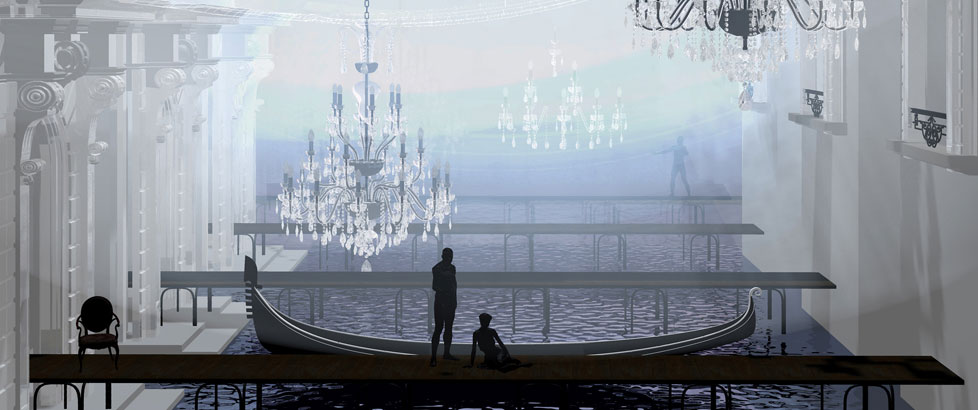
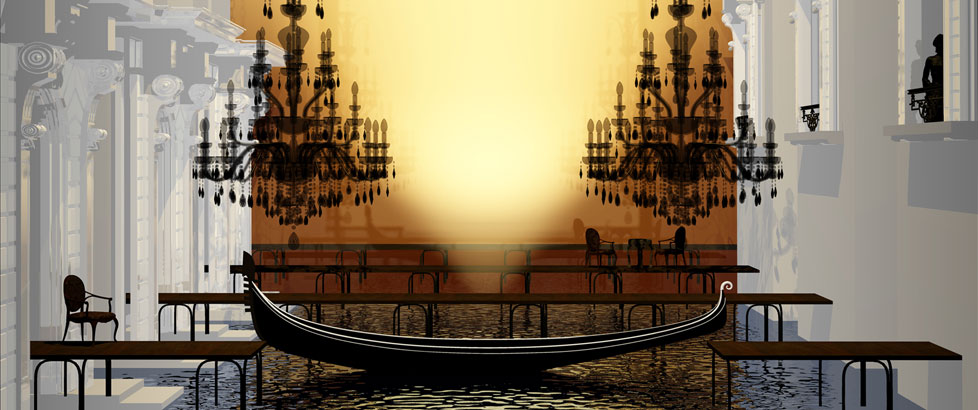
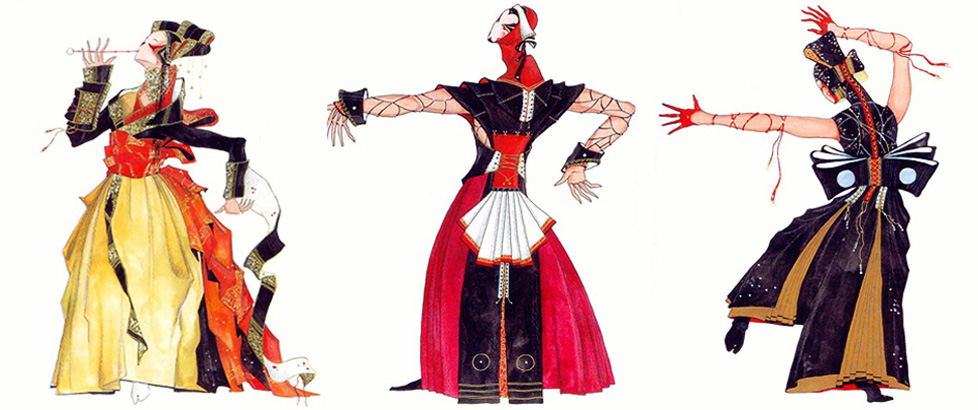
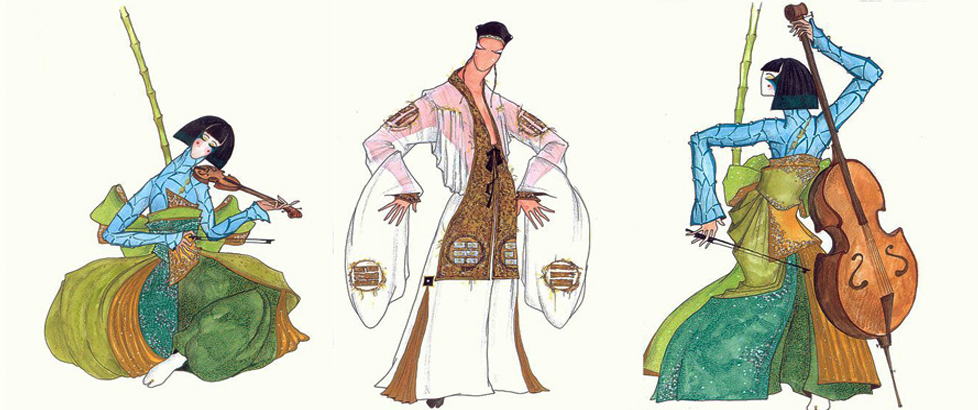




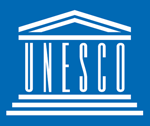

Social Profiles